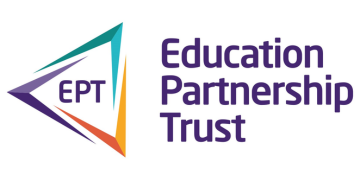Lower-value programmes, which support the youngest and often most vulnerable apprentices, are at risk of becoming unattractive to deliver, says Sue Pittock
After Halfords’ announcement that it plans to scrap its level 2 provision because of a desire “to continue delivering highest quality training”, it didn’t take long for a staff email to reach FE Week revealing that the 20 per cent funding cut was a key reason for stopping the programme.
Rated ‘good’ by Ofsted in March, Halfords knows what makes a great programme, and what it costs to deliver quality teaching and learning. Its description of the challenge it faces is very clear. Delivering quality programmes is not possible without the right funding.
The decline of level 2 apprenticeship starts since the introduction of the levy in May 2017 has been widely reported. Compare the first six months of 2016-17 with the first six months of 2018-19 and the change is significant: starts at level 2 are down by more than 42 per cent (which equates to 63,000).
At the same time higher apprenticeship starts have more than doubled, from 18,000 to 43,000, an increase of 138 per cent.
Starts at level 2 are down by more than 42 per cent
With the increase in starts at higher levels, and the associated high funding bands, you would expect these standards to be under early review. However, to date, of the 61 reviews that have taken place or are underway, only seven are at level 5 or above, with 44 at levels 2 and 3.
The Institute for Apprenticeships and Technical Education (IfATE) describes its process of reviewing funding bands as “open, consistent and collaborative”, considering evidence from employers, training providers, end-point assessment (EPA) bodies and trailblazer groups.
Working across a wide range of sectors, including automotive, IT, management, hospitality, food manufacturing and craft, Remit has been engaged with many trailblazer groups and funding band reviews.
The experiences of trailblazer chairs are very different. New funding bands are proposed with little explanation or justification by the IfATE, with employers unclear about how the decision was reached, and why the new band selected. These experiences seem contrary to the openness, consistency and collaboration the IfATE describes.
Funding band reviews present a real risk to ensuring there are providers in the marketplace who can support employers to deliver the standards they need. Where funding is reduced to the point that quality is compromised, providers of all types will have to consider whether a standard remains viable to deliver.
If this were to happen, the lower-value programmes at levels 2 and 3, supporting the youngest and often most vulnerable apprentices, are at risk of becoming unattractive to deliver.
The health and social care market is an example of reduced employer appetite for level 2 and 3 programmes and demonstrates the impact of low funding bands. There has been a decline from 90,290 starts in 2016-17, to 44,380 in 2017-18, and just 15,440 starts during the first half of 2018-19. If this continues the market will have shrunk by two thirds in the past two years against a backdrop of increasing demand for health and social care workers.
If government is concerned about affordability, it needs to think about what it wants to fund. Is a reduction in funding for high-volume level 2 and 3 programmes required to fund the unexpected uptake at higher levels? And if so, is that right? Or should government consider regulating who can undertake a funded apprenticeship, and what they can study?
Trailblazer chairs are industry professionals, not experts in apprenticeship policy and funding. They need clear templates and guidance from the IfATE on how to lead the gathering of evidence submissions from their chosen providers and EPA bodies, and how to review these for completeness and accuracy before submission. This will prevent variations in how evidence is displayed, what is included and how this is calculated.
At a time of uncertainty, employers need to be confident the skills system supports them to build the workforce they need to be successful. Apprenticeships could and should be an essential part of this approach, providing the system is funded appropriately.







I totally agree with this article by Sue Pittock.
I have worked in the apprenticeship sector for 22 years and have never known it to be so fragile and vulnerable at the moment. The whole system is in disarray, funding cuts and provider reduced allocations has started to bite with the young community suffering as a result. Apprenticeship providers can no longer sustain high-quality delivery of apprenticeship standards with these continuous changes. It is no surprise that Halfords decision was based around finances, as many other organisations have had to do the same in the current climate. Its no wonder Level 2s have hit rock bottom for starts. I am continually discussing funding allocations with providers and colleges who have categorically stated they can no longer take on 16-18 starts as they have no funding left to accommodate them…… this is unheard of….when 16-18-year-olds should be protected group. Sue’s summary article explains it all but the government is not listening!!!! God help us.